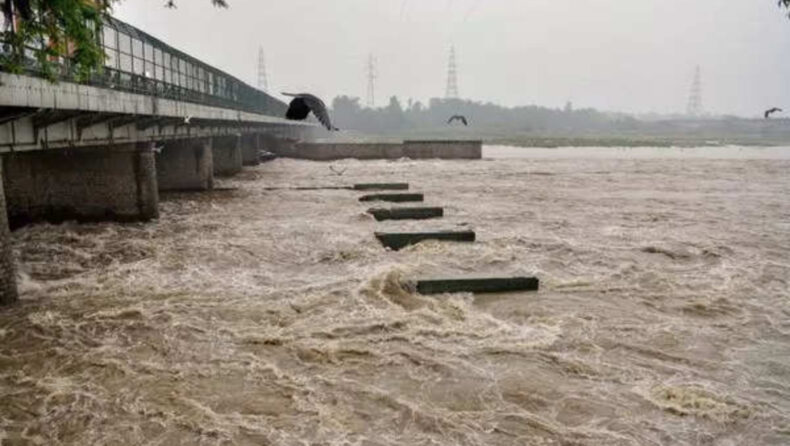Delhi Rain: Commencing the evacuation of residents in flood-prone low-lying areas, authorities in Delhi have acted.
Over the past three days, the northern region of India has been devastated by intense rainfall, leading to extensive destruction and a tragic loss of over 37 lives.
In Delhi, the water level of the Yamuna River surged beyond the critical threshold of 205.33 meters late last evening and further rose to 206.24 meters this morning, primarily due to increased water release from the Hathnikund barrage in Haryana.
According to officials, the river exceeded the anticipated warning level earlier than predicted.
Numerous rivers in the area are overflowing, while urban centers and towns are grappling with submerged roads and buildings, with water levels reaching knee-deep depths.

In Himachal Pradesh, the state most severely impacted by the relentless monsoon rainfall, the destructive force of the downpour persisted on Monday. Landslides and flash floods, caused by continuous rainfall, inflicted substantial damage to houses and properties worth hundreds of crores of rupees.
In Uttarakhand, continuous rainfall and landslides have led to the blockage of numerous roads and highways, while reports indicate that the water levels in rivers and streams have exceeded the critical threshold.
Significant rainfall across various regions of Rajasthan, Haryana, and Punjab resulted in extensive waterlogging and flooding in low-lying areas. In response, authorities promptly initiated action in the most severely affected locations.
The state of Rajasthan came to a halt as heavy monsoon rains disrupted normal life, submerging roads, railway tracks, and even hospitals. Further rainfall is anticipated in the state today.
According to the meteorological department, the convergence of western disturbance and monsoonal winds resulted in the occurrence of the intense rainfall period.
Response of Delhi authorities
In response, the authorities have initiated the evacuation process for residents residing in low-lying areas prone to flooding. These individuals will be relocated to relief camps and community centers situated across different areas of the city.
To oversee flood-prone areas and monitor the water level of the Yamuna River, the Delhi government has established 16 control rooms. Additionally, Chief Minister Arvind Kejriwal has unveiled a series of measures aimed at addressing the issue of waterlogging.

During a press conference, Mr. Kejriwal highlighted that Delhi is experiencing its most intense rainfall in 40 years. He stated, “The last instance of rainfall of this magnitude occurred in 1982, when there was 169 mm of precipitation within a 24-hour period. Hence, this current rainfall is unprecedented, and regrettably, the city’s drainage system is not equipped to handle such extreme downpours.”
The meteorological department has forecasted additional episodes of heavy rainfall for Himachal Pradesh, Jammu and Kashmir, Uttarakhand, Haryana, Delhi, Uttar Pradesh, and Rajasthan.
With substantial rainfall causing widespread disruption across most of northern India, the Army and National Disaster Response Force (NDRF) have significantly escalated their efforts in providing relief and conducting rescue operations in the affected states.
Prime Minister Narendra Modi has personally contacted Chief Minister Sukhwinder Singh Sukhu of Himachal Pradesh, offering reassurances of complete assistance and support.













